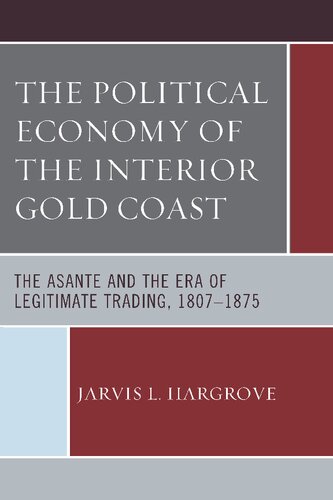1 In the first half of the sixteenth century as Western European countries began to grow and expand their reach across the Atlantic Ocean, the need for cheap and inexpensive labor doubled. This need for labor began to intensify with each passing year, leading to an expanded trade in captives from West Africa or the start of Trans-Atlantic Slave Trade. Connecting several continents, countries and lasting more than 300 years, the Trans-Atlantic Slave Trade has been one of the most analyzed topics across numerous historical fields with several arguments regarding the subject. Furthermore, this discussion has only continued to develop since the turn of the twenty-first century or after Britain and the United States began to celebrate the 200th Anniversary of the Abolition of the Trans-Atlantic Slave Trade which occurred in 2007 and 2008, respectively. Additionally, this event, the 200th anniversary, has only increased the necessity for more localized studies of West African states in the trade’s infancy, in its years of expansion, during its eventual closure and the transition experienced in the declining years after 1807–1808. Since the inception of the Trans-Atlantic Slave Trade in the sixteenth cen- tury, beginning first with slave traders, missionaries, and explorers of West Africa and ultimately the victims themselves, there have been many individu- als who have offered comments on the role of the trade. Several of the earliest works, written by outsiders, often presented the people, religion and cultures of Africa along with the value of the slave trade and slavery to the world in a very biased perspective. As numerous European states desired to extend into new territories, these countries often justified the expansion to new lands and any destruction this caused. Eventually, later scholars used these early works along with numerous studies written by victims to devote a substantial amount of time and effort to a reinterpretation of Trans-Atlantic Slave Trade and its continued study
چکیده فارسی
1 در نیمه اول قرن شانزدهم، هنگامی که کشورهای اروپای غربی شروع به رشد و گسترش دامنه خود در سراسر اقیانوس اطلس کردند، نیاز به نیروی کار ارزان و ارزان دو برابر شد. این نیاز به نیروی کار با گذشت هر سال تشدید میشد و منجر به گسترش تجارت اسیران از غرب آفریقا یا شروع تجارت برده در اقیانوس اطلس شد. تجارت برده ترانس آتلانتیک که چندین قاره، کشور را به هم متصل می کند و بیش از 300 سال طول می کشد، یکی از موضوعات مورد تجزیه و تحلیل در بسیاری از زمینه های تاریخی با چندین استدلال در مورد این موضوع بوده است. علاوه بر این، این بحث تنها از آغاز قرن بیست و یکم یا پس از آن که بریتانیا و ایالات متحده شروع به جشن گرفتن دویستمین سالگرد لغو تجارت برده در اقیانوس اطلس کردند که به ترتیب در سالهای 2007 و 2008 رخ داد، ادامه یافت. علاوه بر این، این رویداد، دویستمین سالگرد، تنها نیاز به مطالعات محلی بیشتر در مورد کشورهای آفریقای غربی در دوران طفولیت تجارت، در سال های گسترش آن، در طول بسته شدن نهایی آن و انتقال تجربه شده در سال های نزولی پس از 1807-1808 را افزایش داده است. از زمان آغاز تجارت برده فراآتلانتیک در قرن شانزدهم، که ابتدا با تاجران برده، مبلغان، و کاشفان غرب آفریقا و در نهایت خود قربانیان آغاز شد، افراد زیادی بوده اند که نظرات خود را در مورد این نقش ارائه کرده اند. از تجارت. چندین اثر اولیه که توسط افراد خارجی نوشته شدهاند، اغلب مردم، مذهب و فرهنگ آفریقا را همراه با ارزش تجارت برده و بردهداری در چشماندازی بسیار مغرضانه به جهان معرفی میکنند. از آنجایی که بسیاری از کشورهای اروپایی مایل به گسترش به سرزمینهای جدید بودند، این کشورها اغلب گسترش به سرزمینهای جدید و هر گونه تخریب ناشی از آن را توجیه میکردند. در نهایت، محققان بعدی از این آثار اولیه همراه با مطالعات متعدد نوشته شده توسط قربانیان استفاده کردند تا مقدار قابل توجهی از زمان و تلاش خود را برای تفسیر مجدد تجارت برده ماوراء اطلس و ادامه مطالعه آن اختصاص دهند
ادامه ...
بستن ...
Author(s): Jarvis L. Hargrove
Publisher: Lexington Books, Year: 2015
ISBN: 0739187856,9780739187852
ادامه ...
بستن ...










